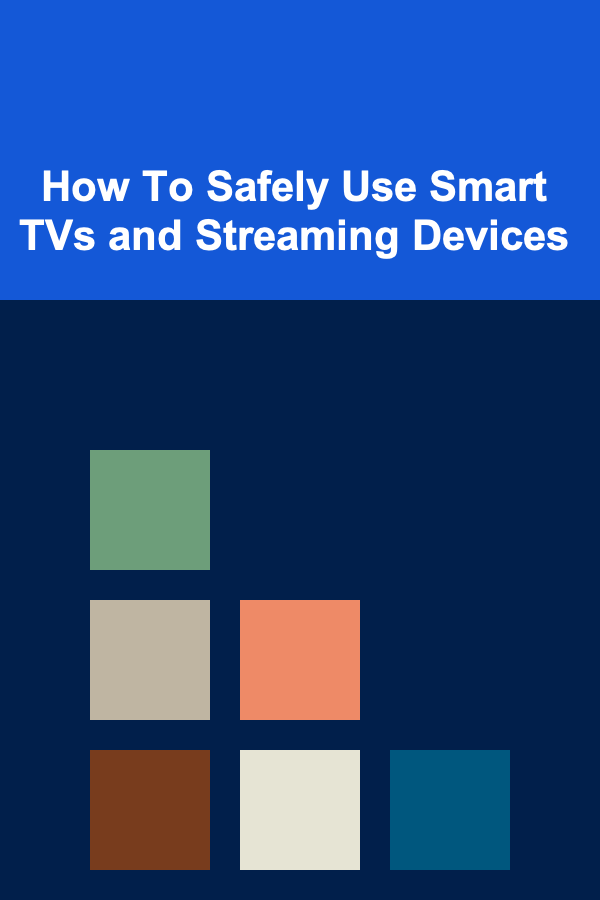
How to Use VR for Sales Presentations
ebook include PDF & Audio bundle (Micro Guide)
$12.99$6.99
Limited Time Offer! Order within the next:

Virtual Reality (VR) has gained immense popularity across various industries, revolutionizing how businesses operate, communicate, and deliver experiences. In particular, VR's impact on sales presentations is profound. The ability to immerse potential customers in highly interactive, visually captivating, and realistic environments provides an entirely new way to showcase products or services. In this article, we'll explore how VR can be effectively used for sales presentations, offering businesses a unique tool for engagement, education, and conversion.
What is VR and How It Works
Before delving into how VR can enhance sales presentations, it's important to first understand what VR is and how it functions. Virtual Reality is an immersive technology that allows users to interact with a computer-generated environment through specialized hardware, such as VR headsets, motion sensors, and haptic devices. Unlike traditional media, VR engages the user in a 360-degree environment that can replicate real-world scenarios or create entirely new, fantastical settings.
There are various types of VR experiences, from fully immersive ones to those that only partially immerse users (augmented reality, for example). In the context of sales, fully immersive VR experiences are often used to create a sense of presence and interaction that is unmatched by any other medium.
Why Use VR for Sales Presentations?
Sales presentations are a critical aspect of the selling process, as they directly impact the customer's perception and decision-making. Traditional sales methods, such as PowerPoint slides or product demos, while effective to a degree, often fail to engage potential customers deeply. VR changes this dynamic in several ways:
1. Immersive Experience
VR provides an entirely immersive experience that allows potential clients to interact with your product or service in a 3D, real-world context. Rather than simply showing images or videos of a product, VR enables customers to "experience" it. They can touch, manipulate, and explore different features in a way that feels real, significantly enhancing their understanding and emotional connection with the product.
2. Increased Engagement
Sales presentations can often become tedious, especially when delivered over long periods. VR offers an interactive element that encourages engagement. Users are more likely to remember and engage with content that they actively participate in, as opposed to passively watching or listening. This makes VR a compelling tool for grabbing attention and maintaining customer interest throughout the presentation.
3. Visualizing Complex Products
Certain products, particularly in industries like real estate, architecture, automotive, and manufacturing, can be difficult to visualize through traditional methods. A VR sales presentation allows customers to explore these products in 3D, offering them a comprehensive view of how it works or how it will fit into their lives. For instance, in real estate, a potential buyer could take a virtual tour of a property before making a decision.
4. Differentiation
In a crowded marketplace, standing out from competitors is essential. VR adds a futuristic and cutting-edge element to your sales pitch, allowing you to differentiate your brand and captivate potential clients. By offering a unique, innovative experience, you are more likely to be remembered, leading to higher conversion rates.
5. Cost-Effectiveness in Long-Term Presentations
Although developing VR experiences may seem costly initially, in the long run, it can be more cost-effective compared to traditional sales presentations that require physical resources (e.g., sample products, printed brochures, venue spaces). VR can simulate these elements without the need for physical items, potentially saving both time and money.
Best Practices for Using VR in Sales Presentations
Now that we've established the potential benefits of using VR for sales presentations, let's look at some best practices that can help you maximize the effectiveness of this technology.
1. Know Your Audience
The first step in creating any successful sales presentation is understanding your target audience. This is especially true with VR. Different audiences may have different levels of familiarity with VR technology, so it's essential to tailor the experience to the customer's comfort level. For instance, a customer who is familiar with VR might be more open to a fully immersive experience, while a first-time user might prefer a more guided, simple experience.
By understanding your audience, you can ensure the VR experience is accessible, engaging, and suited to their specific needs. This also means understanding their pain points, goals, and preferences so you can create an experience that directly addresses their needs.
2. Create a Storytelling Experience
While VR offers a highly engaging environment, it's essential to use it to tell a story. A sales presentation without a narrative can feel disconnected, regardless of how innovative the technology is. Use VR to walk the customer through a story that highlights the pain points they face and showcases how your product or service solves them.
For instance, if you're selling software, you can create a VR experience where the user is guided through a typical workflow, experiencing firsthand how your product streamlines the process. This immersive storytelling approach keeps the experience engaging and meaningful.
3. Simplicity is Key
Despite its potential for immersion, VR can overwhelm users if the experience is too complex. Keep the experience intuitive and user-friendly. For instance, if you're selling a piece of machinery, allow the user to interact with it but avoid overwhelming them with too many features or unnecessary details. Focus on the product's most important benefits and ensure that the VR experience emphasizes those elements.
Additionally, if you're using VR for the first time in a sales context, provide your customers with clear instructions or a tutorial to guide them through the experience. Making the experience accessible to all users---regardless of their technical expertise---will make it more effective.
4. Integrate Interactive Elements
One of the greatest strengths of VR is the ability to engage users interactively. Rather than merely showing a product or service, you can allow potential customers to engage with it, customize it, or explore it in real-time. For example, if you are selling an interior design service, VR can allow the customer to visualize how their own home might look with your proposed designs, colors, and furnishings.
Interactivity increases the level of engagement and makes the customer feel involved in the process, which can lead to higher conversion rates. The more a customer can interact with your product, the more likely they are to develop a strong emotional connection to it.
5. Test and Iterate
Creating an effective VR sales presentation isn't a one-time effort. It's crucial to test your VR experience with a small sample of users and gather feedback. What works well? What confuses users? Are there any elements that distract from the message you're trying to convey? Use this feedback to refine and improve the experience continuously.
Additionally, ensure that the VR experience is constantly updated to reflect any changes in the product or service. If your product evolves, your VR presentation should evolve with it, ensuring that customers always see the most accurate and relevant information.
6. Leverage VR for Remote Sales
One of the most significant advantages of VR in sales presentations is the ability to connect with potential clients remotely. With VR, you can provide an immersive, face-to-face experience without the need for in-person meetings. This is particularly useful for international sales, where travel may not be feasible. By using VR, you can deliver high-quality presentations to clients across the globe, providing a personalized experience without the barriers of distance.
This ability to connect remotely enhances the convenience and scalability of VR sales presentations, allowing businesses to reach a wider audience without sacrificing quality.
Case Studies of Successful VR Sales Presentations
Several companies have successfully integrated VR into their sales presentations, with notable results. Here are a few examples:
1. Real Estate: Matterport
Matterport, a leading provider of 3D capture solutions, has revolutionized the real estate industry by offering virtual tours of properties. Using VR, prospective buyers can take immersive, 360-degree tours of homes and apartments, offering a level of insight that photos or videos alone can't match. This has led to increased interest in listings and a smoother, more efficient buying process.
2. Automotive: Audi VR Experience
Audi has implemented VR to showcase their vehicles in an immersive environment. Using VR headsets, potential buyers can virtually configure and explore Audi models in great detail, all from the comfort of a dealership. This innovation allows customers to interact with the product, visualizing different colors, options, and features in a way that traditional displays cannot provide.
3. Fashion: Tommy Hilfiger
Tommy Hilfiger has used VR in retail stores to allow customers to experience the brand's fashion shows. Using VR headsets, customers can feel like they are sitting front row at a live fashion show, showcasing the brand's latest collections in an entirely new way. This experience has not only increased customer engagement but also created a unique branding opportunity for the company.
Conclusion
Virtual Reality is transforming the landscape of sales presentations, offering businesses a unique way to engage with customers. By leveraging VR's immersive capabilities, sales teams can create highly interactive, visually captivating presentations that not only inform but also excite potential customers. As the technology continues to evolve, VR will only become more integral to the sales process, offering new opportunities for businesses to stand out in a competitive marketplace.
By following best practices---such as knowing your audience, incorporating storytelling, keeping the experience simple, and providing interactivity---VR can become a powerful tool that enhances your sales presentations, builds stronger relationships with customers, and drives conversions. It's time to embrace this innovative technology and use it to create memorable, impactful sales experiences that resonate with your clients.

How to Create a Shipping and Logistics Checklist for Managing Returns
Read More
How to Organize Your Home Gym for Maximum Motivation
Read More
Mastering Accounting: A Comprehensive Guide for Accountants
Read More
How to Understand AI Ethics in Practice
Read More
How To Safely Use Smart TVs and Streaming Devices
Read More
10 Common Mistakes to Avoid When Creating a Volunteer Work To-Do List
Read MoreOther Products

How to Create a Shipping and Logistics Checklist for Managing Returns
Read More
How to Organize Your Home Gym for Maximum Motivation
Read More
Mastering Accounting: A Comprehensive Guide for Accountants
Read More
How to Understand AI Ethics in Practice
Read More
How To Safely Use Smart TVs and Streaming Devices
Read More